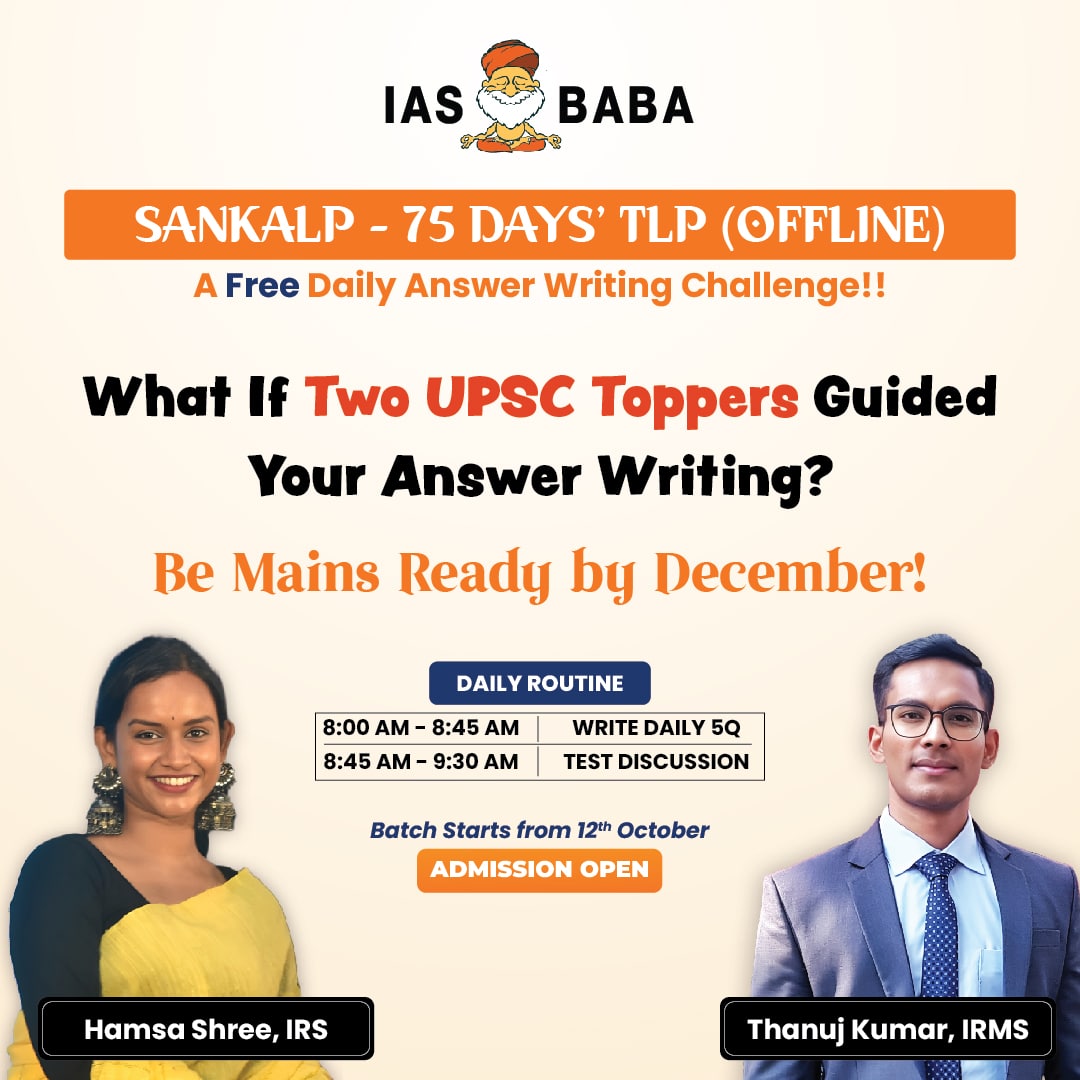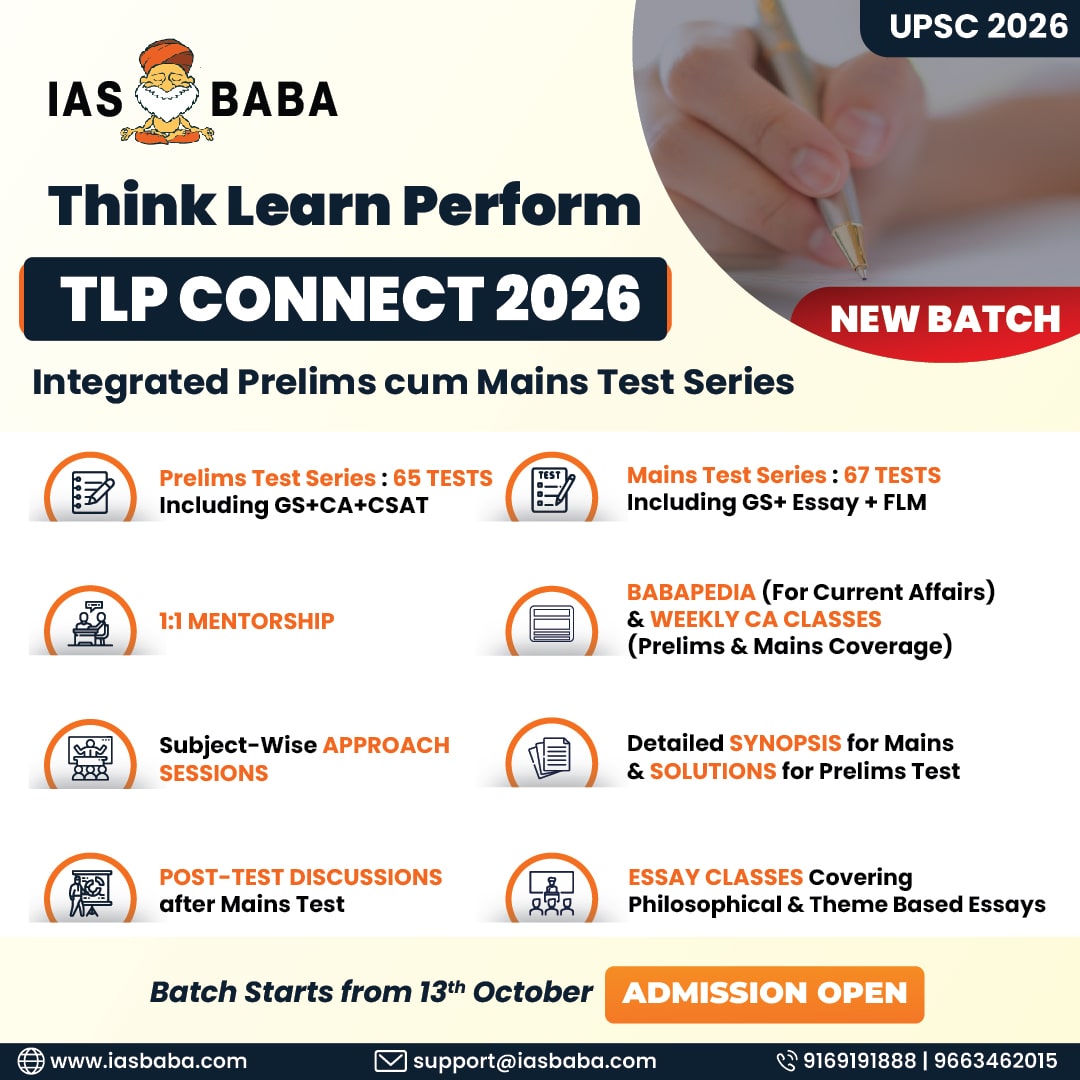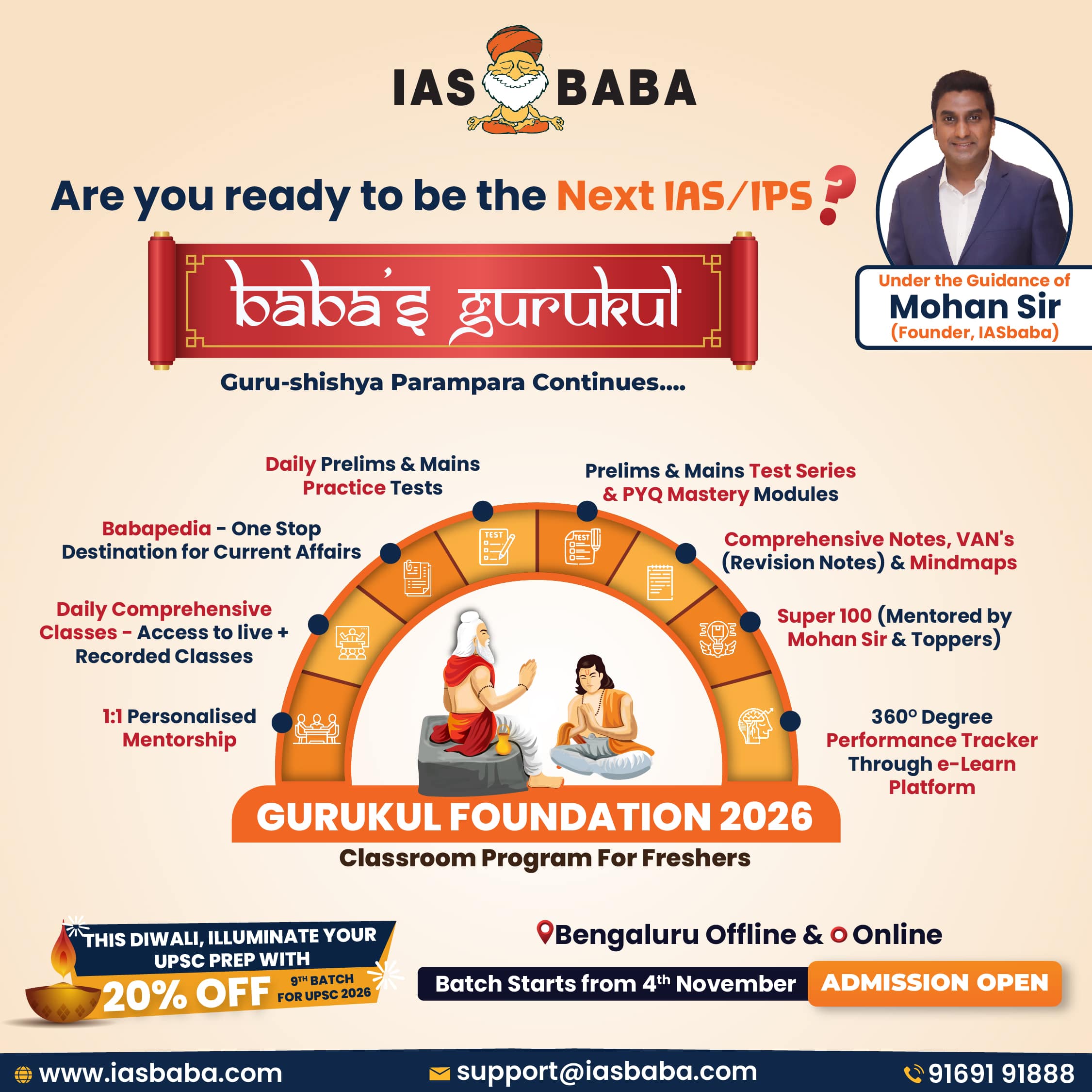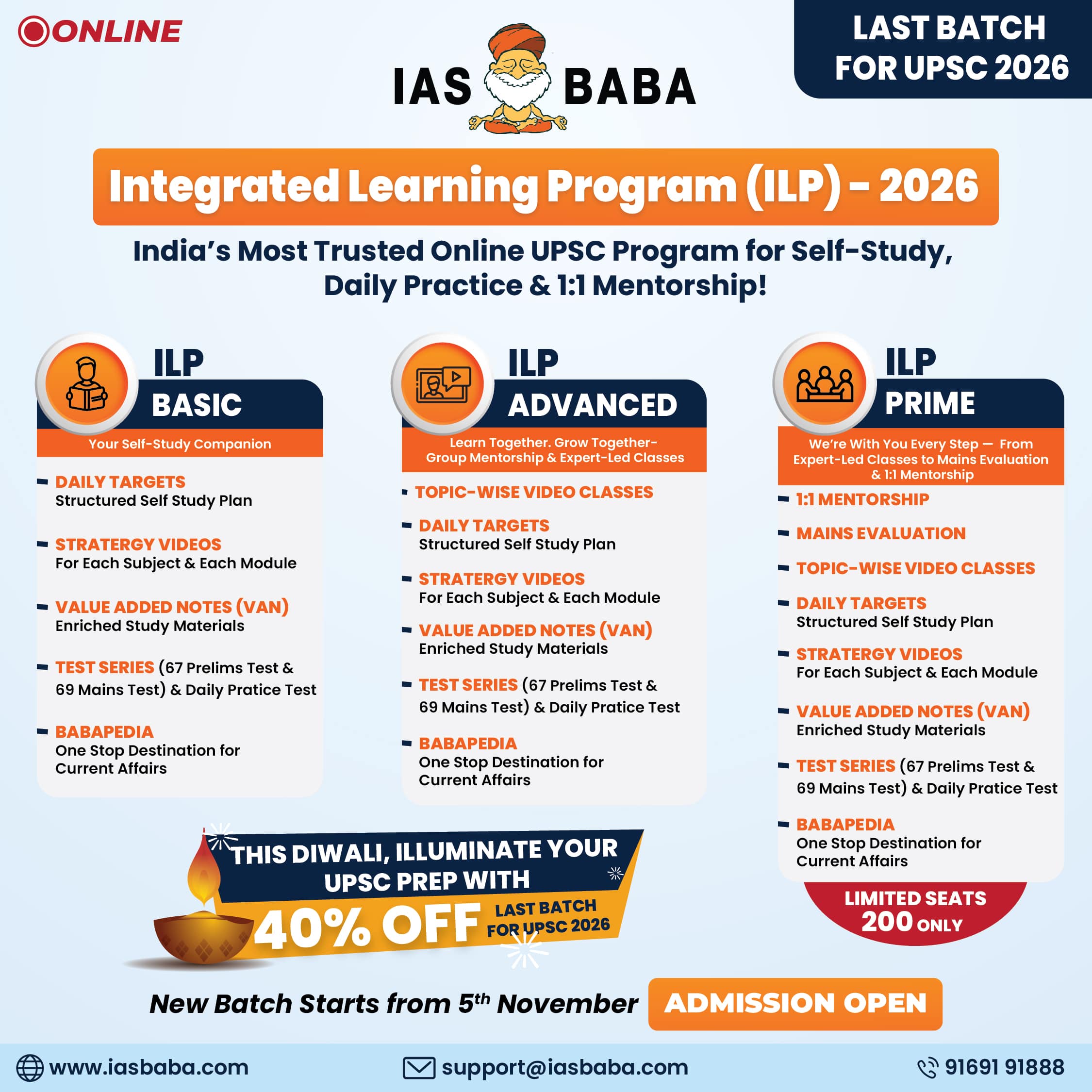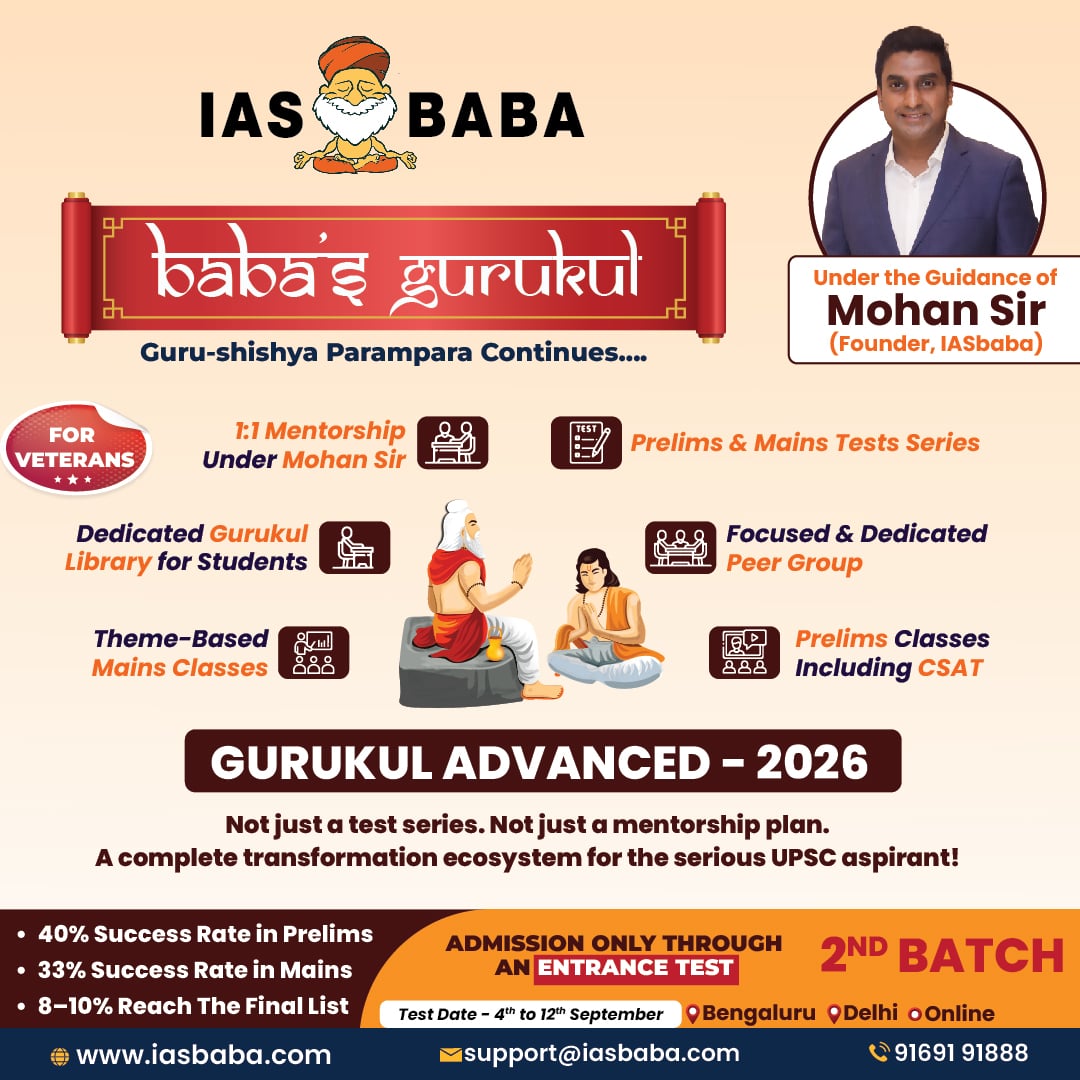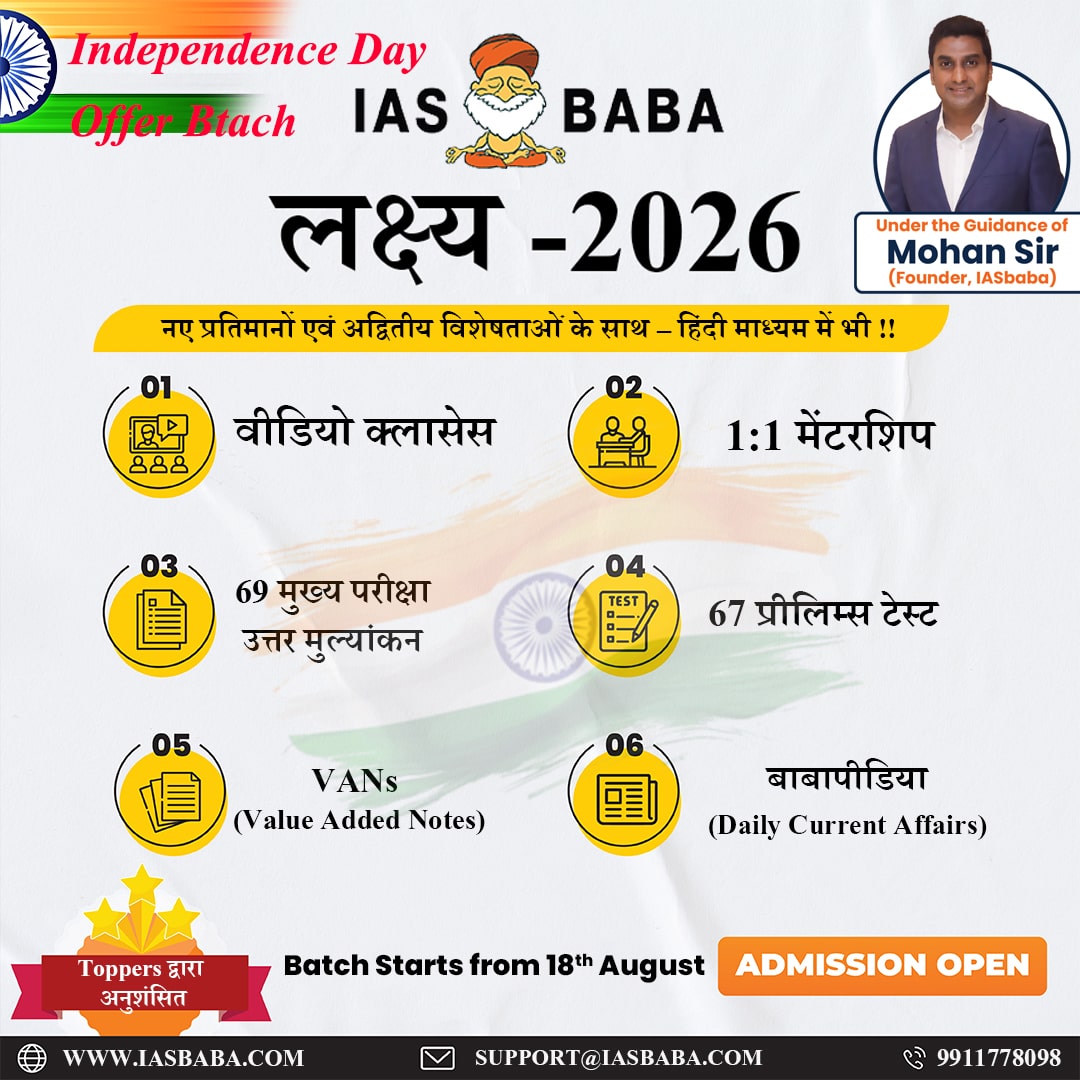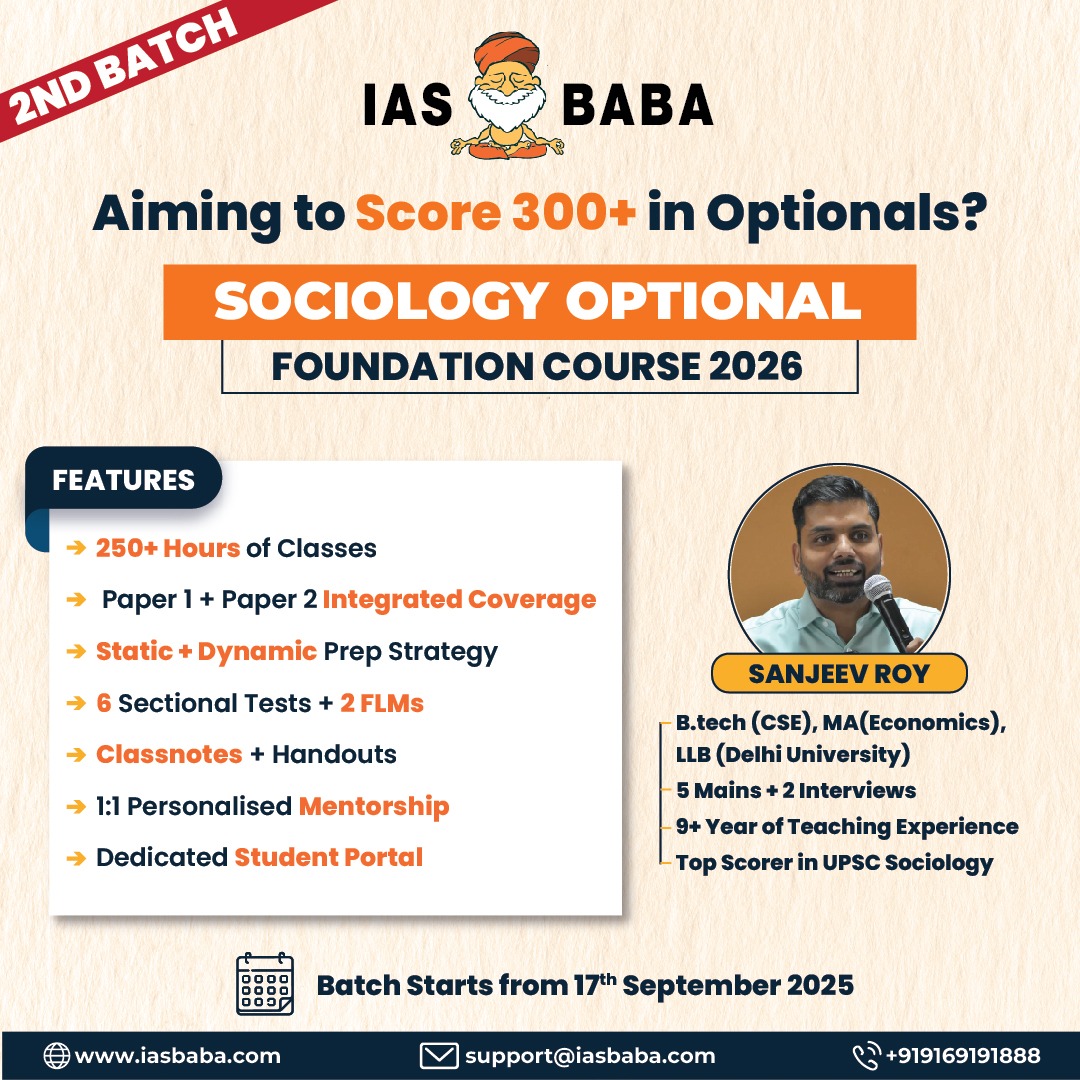IASbaba Daily Prelims Quiz
For Previous Daily Quiz (ARCHIVES) – CLICK HERE
The Current Affairs questions are based on sources like ‘The Hindu’, ‘Indian Express’ and ‘PIB’, which are very important sources for UPSC Prelims Exam. The questions are focused on both the concepts and facts. The topics covered here are generally different from what is being covered under ‘Daily Current Affairs/Daily News Analysis (DNA) and Daily Static Quiz’ to avoid duplication. The questions would be published from Monday to Saturday before 2 PM. One should not spend more than 10 minutes on this initiative.
Gear up and Make the Best Use of this initiative.
Do remember that, “the difference between Ordinary and EXTRA-Ordinary is PRACTICE!!”
Important Note:
- Don’t forget to post your marks in the comment section. Also, let us know if you enjoyed today’s test 🙂
- After completing the 5 questions, click on ‘View Questions’ to check your score, time taken, and solutions.
Test-summary
0 of 5 questions completed
Questions:
- 1
- 2
- 3
- 4
- 5
Information
To view Solutions, follow these instructions:
- Click on – ‘Start Test’ button
- Solve Questions
- Click on ‘Test Summary’ button
- Click on ‘Finish Test’ button
- Now click on ‘View Questions’ button – here you will see solutions and links.
You have already completed the test before. Hence you can not start it again.
Test is loading...
You must sign in or sign up to start the test.
You have to finish following test, to start this test:
Results
0 of 5 questions answered correctly
Your time:
Time has elapsed
You have scored 0 points out of 0 points, (0)
| Average score |
|
| Your score |
|
Categories
- Not categorized 0%
| Pos. | Name | Entered on | Points | Result |
|---|---|---|---|---|
| Table is loading | ||||
| No data available | ||||
- 1
- 2
- 3
- 4
- 5
- Answered
- Review
-
Question 1 of 5
1. Question
Which of the following committees recommended the establishment of Payments Banks in India?
Correct
Answer: A. Nachiket Mor Committee
Explanation:
- Option A: Correct. The Nachiket Mor Committee, set up by the RBI in 2013, recommended the creation of Payments Banks to serve low-income households and small businesses by providing basic banking services.
- Option B: The M. Narasimham Committee focused on banking sector reforms in the 1990s.
- Option C: The Raghuram Rajan Committee worked on financial sector reforms, but did not recommend Payments Banks specifically.
Option D: The Urjit Patel Committee was related to monetary policy framework, not Payments Banks.
Incorrect
Answer: A. Nachiket Mor Committee
Explanation:
- Option A: Correct. The Nachiket Mor Committee, set up by the RBI in 2013, recommended the creation of Payments Banks to serve low-income households and small businesses by providing basic banking services.
- Option B: The M. Narasimham Committee focused on banking sector reforms in the 1990s.
- Option C: The Raghuram Rajan Committee worked on financial sector reforms, but did not recommend Payments Banks specifically.
Option D: The Urjit Patel Committee was related to monetary policy framework, not Payments Banks.
-
Question 2 of 5
2. Question
With reference to the Eight Core Sectors of the Indian economy, consider the following statements:
- Fertilisers and Cement are part of the Core Sector.
- These eight sectors account for more than 40% weight in the Index of Industrial Production (IIP).
- Textile and Automobiles are also included in the Core Sector list.
Which of the statements given above is/are correct?
Correct
Answer: A. 1 and 2 only
Explanation:
- Statement 1: Correct. Fertilisers and Cement are part of the Eight Core Sectors.
- Statement 2: Correct. The Eight Core Sectors account for about 40.27% of the total weight of the IIP.
Statement 3: Incorrect. Textile and Automobiles are not part of the Core Sectors; they fall under the manufacturing sector but not among the designated eight core industries.
Incorrect
Answer: A. 1 and 2 only
Explanation:
- Statement 1: Correct. Fertilisers and Cement are part of the Eight Core Sectors.
- Statement 2: Correct. The Eight Core Sectors account for about 40.27% of the total weight of the IIP.
Statement 3: Incorrect. Textile and Automobiles are not part of the Core Sectors; they fall under the manufacturing sector but not among the designated eight core industries.
-
Question 3 of 5
3. Question
Which of the following are essential components of the procedure for implementing passive euthanasia in India, as per the Supreme Court guidelines?
- Certification by a medical board
- Consent of the patient’s family or next of kin
- Approval by the District Magistrate
- Recommendation by the Medical Council of India
Select the correct answer using the code below:
Correct
Answer: A. 1, 2 and 3 only
Explanation:
- Statement 1: Correct. Certification by a medical board is essential to confirm the terminal/irreversible condition.
- Statement 2: Correct. Consent from the family or next of kin is required.
- Statement 3: Correct. The District Magistrate oversees and approves the implementation.
Statement 4: Incorrect. The Medical Council of India (now replaced by NMC) is not directly involved in case-specific recommendations.
Incorrect
Answer: A. 1, 2 and 3 only
Explanation:
- Statement 1: Correct. Certification by a medical board is essential to confirm the terminal/irreversible condition.
- Statement 2: Correct. Consent from the family or next of kin is required.
- Statement 3: Correct. The District Magistrate oversees and approves the implementation.
Statement 4: Incorrect. The Medical Council of India (now replaced by NMC) is not directly involved in case-specific recommendations.
-
Question 4 of 5
4. Question
With reference to the launch vehicles developed by ISRO, consider the following statements:
- PSLV is capable of launching satellites into both polar and geostationary orbits.
- GSLV Mk III (LVM3) is ISRO’s most powerful operational launch vehicle.
- SSLV is designed to carry heavy payloads exceeding 5 tonnes into geostationary orbit.
Which of the statements given above is/are correct?
Correct
Answer: A. 1 and 2 only
Explanation:
- Statement 1: Correct. PSLV is versatile and can launch satellites into polar, Sun-synchronous, and sub-GTO orbits, but not ideal for full GTO/geostationary launches.
- Statement 2: Correct. GSLV Mk III (LVM3) is currently ISRO’s most powerful launch vehicle, capable of carrying up to 4 tonnes to GTO.
Statement 3: Incorrect. SSLV is designed for light payloads (up to 500 kg) to Low Earth Orbit (LEO), not for heavy or geostationary payloads.
Incorrect
Answer: A. 1 and 2 only
Explanation:
- Statement 1: Correct. PSLV is versatile and can launch satellites into polar, Sun-synchronous, and sub-GTO orbits, but not ideal for full GTO/geostationary launches.
- Statement 2: Correct. GSLV Mk III (LVM3) is currently ISRO’s most powerful launch vehicle, capable of carrying up to 4 tonnes to GTO.
Statement 3: Incorrect. SSLV is designed for light payloads (up to 500 kg) to Low Earth Orbit (LEO), not for heavy or geostationary payloads.
-
Question 5 of 5
5. Question
Consider the following statements regarding the Nuclear Non-Proliferation Treaty (NPT):
- The treaty allows International Atomic Energy Agency (IAEA) inspections to verify non-proliferation obligations.
- North Korea remains a signatory to the NPT.
- The NPT is based on three pillars: non-proliferation, disarmament, and peaceful use of nuclear energy.
Which of the statements given above is/are correct?
Correct
Explanation:
- Statement 1: Correct. The IAEA conducts inspections to ensure compliance with NPT obligations, particularly to prevent diversion of nuclear material for weapons use.
- Statement 2: Incorrect. North Korea withdrew from the NPT in 2003.
Statement 3: Correct. The three pillars of the NPT are non-proliferation, disarmament, and peaceful use of nuclear energy.
Incorrect
Explanation:
- Statement 1: Correct. The IAEA conducts inspections to ensure compliance with NPT obligations, particularly to prevent diversion of nuclear material for weapons use.
- Statement 2: Incorrect. North Korea withdrew from the NPT in 2003.
Statement 3: Correct. The three pillars of the NPT are non-proliferation, disarmament, and peaceful use of nuclear energy.
- Current Affairs Quiz, IAS Daily Current Affairs Quiz, IAS UPSC Current Affairs Quiz, IAS UPSC Prelims Quiz, IASbaba's Current Affairs Prelims Quiz, IASbaba's Daily Quiz, IASbaba's UPSC Quiz, Prelims Current Affairs Quiz, UPSC Current Affairs Quiz, UPSC Current Affairs Quiz IASbaba, UPSC Daily Current Affair Quiz, UPSC IAS Daily Quiz



